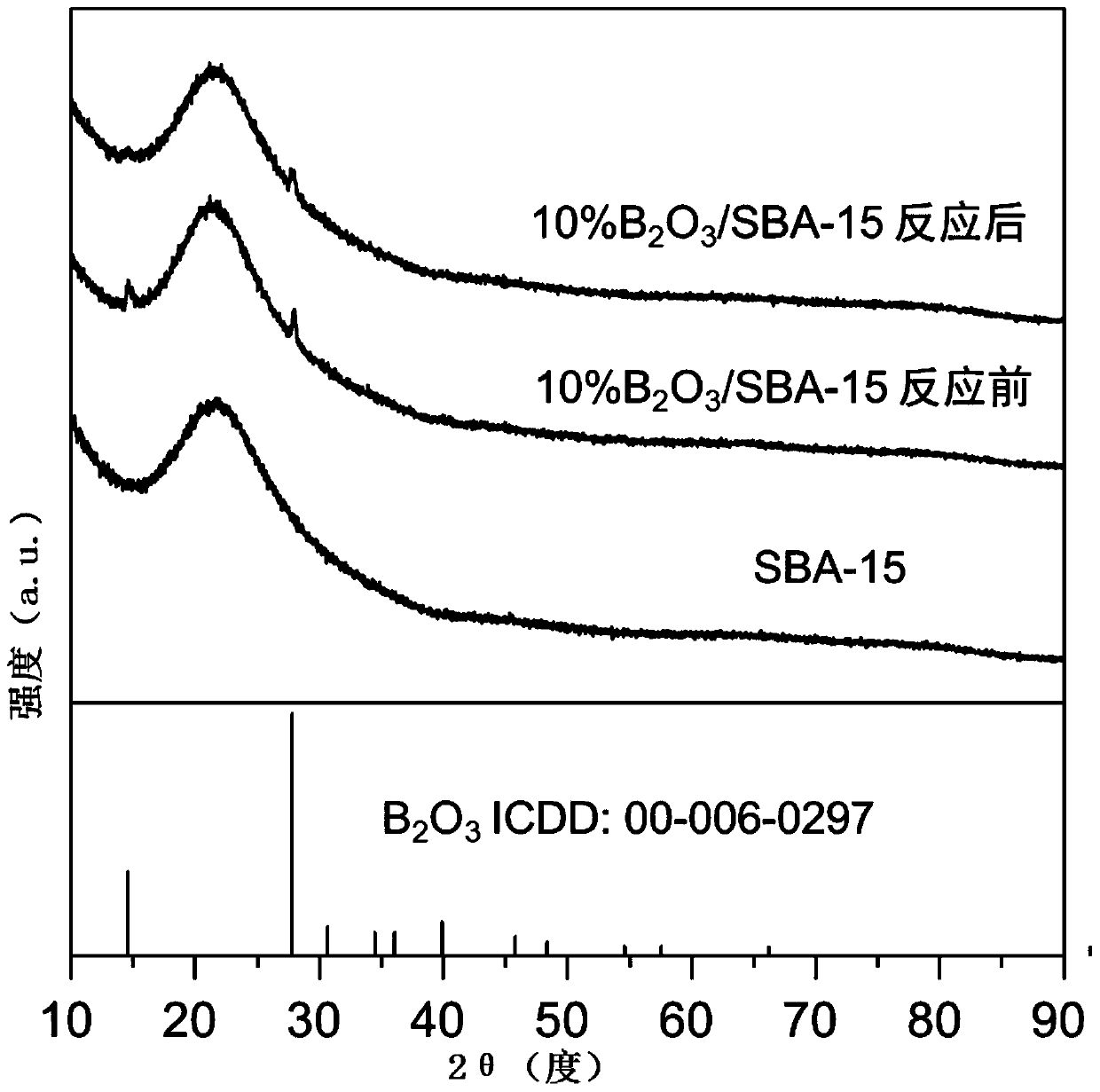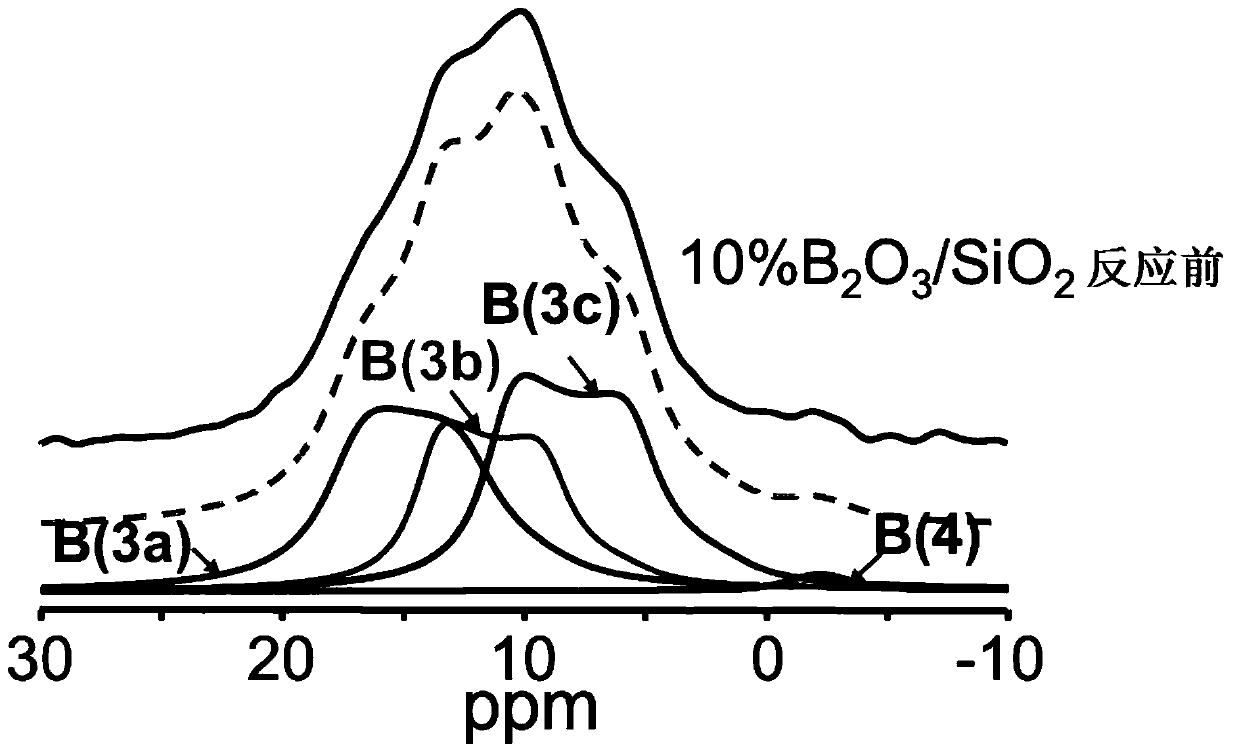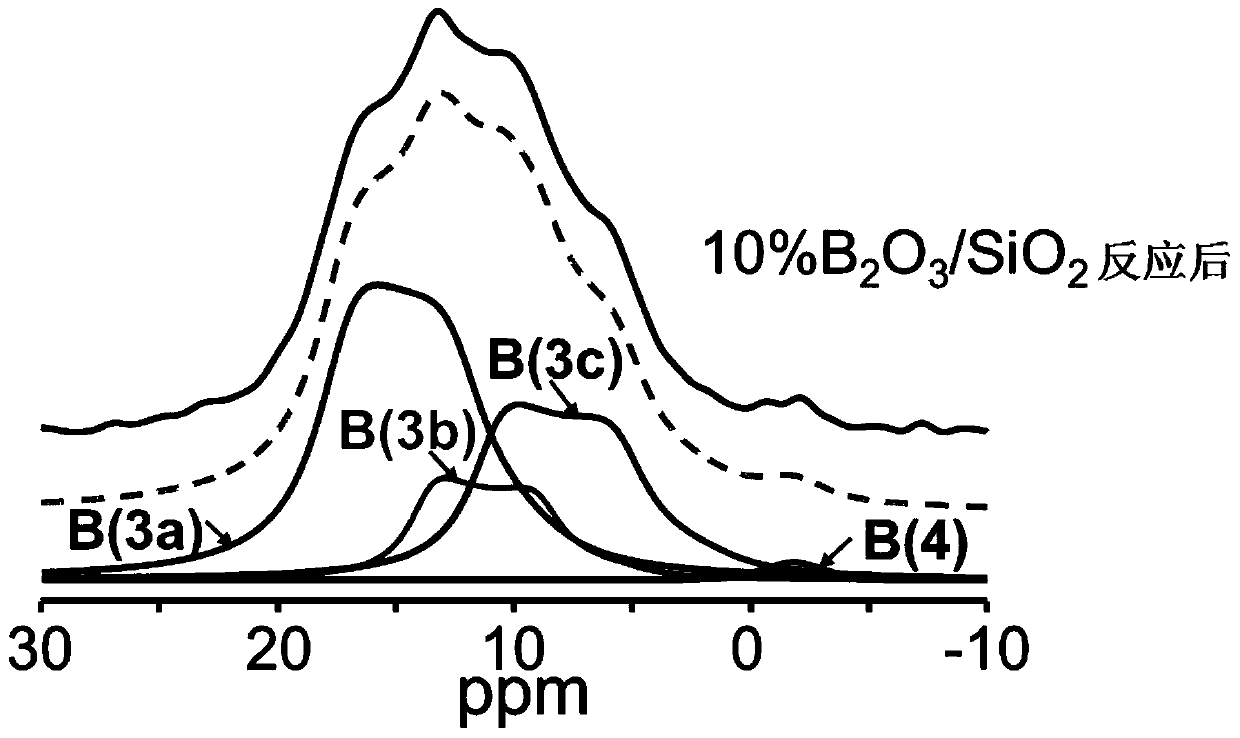Supported non-metal catalyst, preparation method and application of catalyst
A non-metallic catalyst and supported technology, which is applied in the field of supported non-metallic catalysts, preparation, and catalyzed oxidative dehydrogenation of low-carbon alkanes, can solve the problem of low olefin selectivity, achieve low reaction temperature, simple preparation method, and difficult depth The effect of oxidation
- Summary
- Abstract
- Description
- Claims
- Application Information
AI Technical Summary
Problems solved by technology
Method used
Image
Examples
Embodiment 1-1
[0082] Preparation of embodiment 1-1 supported non-metallic catalyst
[0083] (1) Take 467.5 mg of boric acid in a vial, add 5 mL of ethylene glycol, and stir to dissolve at 50 ° C, which is the boron precursor solution;
[0084] (2) Take 1 mL of the above solution and impregnate 1 g of SBA-15, let it stand at room temperature for 2 hours, and oven overnight at 50 ° C. The obtained sample is placed in a muffle furnace and roasted at 700 ° C for 3 hours to obtain 5% by mass B 2 o 3 / SBA-15 catalyst.
Embodiment 1-2
[0085] Preparation of embodiment 1-2 supported non-metallic catalyst
[0086] (1) Take 986.8 mg of boric acid in a vial, add 5 mL of ethylene glycol, and stir to dissolve at 50 ° C, which is the boron precursor solution;
[0087] (2) Take 1 mL of the above solution and impregnate 1 g of SBA-15, let it stand at room temperature for 2 hours, and oven overnight at 50 ° C. The obtained sample is placed in a muffle furnace and roasted at 700 ° C for 3 hours to obtain 10 mass % B 2 o 3 / SBA-15 catalyst, the resulting 10% by mass B 2 o 3 The XRD pattern of / SBA-15 catalyst is as follows figure 1 As shown before the reaction, the NMR spectrum is as diagram 2-1 shown.
Embodiment 1-3
[0088] Preparation of embodiment 1-3 supported non-metallic catalyst
[0089] (1) Take 2.213g of boric acid in a vial, add 5mL of ethylene glycol, and stir to dissolve at 80°C, which is the boron precursor solution;
[0090] (2) Take 1mL of the above solution and impregnate 1g of SBA-15, let it stand at room temperature for 2h, and oven at 50°C overnight. 2 o 3 / SBA-15 catalyst.
PUM
 Login to View More
Login to View More Abstract
Description
Claims
Application Information
 Login to View More
Login to View More - R&D
- Intellectual Property
- Life Sciences
- Materials
- Tech Scout
- Unparalleled Data Quality
- Higher Quality Content
- 60% Fewer Hallucinations
Browse by: Latest US Patents, China's latest patents, Technical Efficacy Thesaurus, Application Domain, Technology Topic, Popular Technical Reports.
© 2025 PatSnap. All rights reserved.Legal|Privacy policy|Modern Slavery Act Transparency Statement|Sitemap|About US| Contact US: help@patsnap.com



